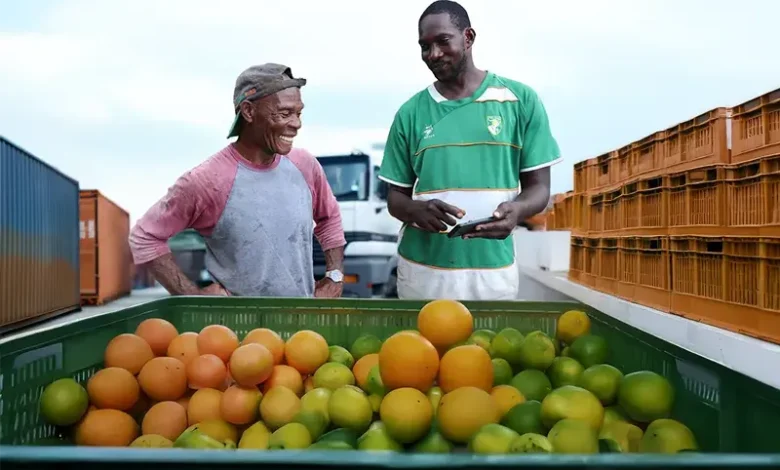Citrus Industry and Export Growth in Dominica

Dominica’s fertile soil and favourable climate have long supported a thriving citrus industry, contributing significantly to the nation’s agricultural exports. The primary citrus fruits cultivated include grapefruits, oranges, lemons, and limes.
Historical Context of Citrus Cultivation in Dominica
Citrus cultivation in Dominica dates back several centuries, with the island’s Indigenous people and European settlers recognising the favourable growing conditions. Over time, citrus fruits, alongside bananas and coconuts, became integral to Dominica’s agricultural exports. The primary cultivation areas are located in the Layou Valley and along the southwest coast, regions known for their rich, well-drained soils and optimal rainfall patterns. Dominica was the principal source of fruit used in Rose’s lime juice for many years, highlighting its prominence in the citrus industry.
Production and Export Data
Citrus fruits from Dominica have experienced fluctuations in production volumes over the years. In 1999, the island produced approximately 21,000 tons of grapefruits, 8,000 tons of oranges, and 1,000 tons of lemons and limes.
More recent data indicates that in 2022, Dominica’s fresh orange production was approximately 4.88 million kilograms, reflecting a slight decrease of 0.35% from the previous year.
Export markets for Dominica’s citrus products have traditionally included neighboring Caribbean islands and international destinations. In 2021, Dominica exported 990 kilograms of fresh or dried citrus fruits, with Antigua and Barbuda and St. Kitts and Nevis being the primary importers.
Additionally, in 2023, Dominica exported edible fruits, nuts, and peel of citrus fruits to France, amounting to US$340,000.
Economic Significance
Citrus fruits from Dominica play a vital role in the nation’s economy. Agriculture accounts for about 20% of the Gross Domestic Product (GDP) and employs approximately 40% of the labor force.
Within this sector, citrus fruits, alongside bananas and coconuts, are major contributors to export revenues. The income generated from citrus exports supports rural livelihoods, infrastructure development, and contributes to the overall economic stability of the island.
Challenges Facing the Citrus Industry
Despite its contributions, the citrus industry in Dominica faces several challenges:
- Natural Disasters: The island’s location in the hurricane belt makes it susceptible to extreme weather events. Hurricane Maria in 2017, for instance, caused extensive damage to agricultural infrastructure, including citrus orchards, leading to significant economic losses.
- Diseases: Citrus crops are vulnerable to various diseases such as melanose (Diaporthe citri), anthracnose (Glomerella cingulata), and gummosis. These diseases can lead to reduced yields and affect fruit quality, posing challenges for both local consumption and export market.
- Market Access and Trade Policies: Shifts in international trade policies, particularly within European and North American markets, can impact the competitiveness of Dominica’s citrus exports. Navigating these policies requires strategic planning and adaptation by local producers.
- Infrastructure Limitations: Inadequate storage facilities and irregular shipping schedules can lead to post-harvest losses. The perishable nature of citrus fruits necessitates efficient logistics to maintain quality during transportation to export markets.
- Labor Shortages: Migration of younger populations to urban areas or abroad has led to a decline in the agricultural workforce. This labor shortage affects the maintenance of citrus orchards and the overall productivity of the sector.
Strategies for Revitalization and Growth
To address these challenges and enhance the citrus industry’s resilience, several strategies can be implemented:
- Disease Management and Research: Investing in agricultural research to develop disease-resistant citrus varieties is crucial. Implementing integrated pest management practices can also help mitigate the impact of diseases on citrus crops.
- Infrastructure Development: Improving storage facilities and establishing reliable transportation networks are essential to reduce post-harvest losses. Upgrading port facilities and ensuring regular shipping schedules can enhance export efficiency.
- Market Diversification: Exploring new international markets and developing value-added products, such as citrus-based beverages and essential oils, can open additional revenue streams. This diversification reduces dependency on traditional markets and adds economic resilience.
- Labor Force Development: Implementing training programs to attract and retain young individuals in agriculture can rejuvenate the workforce. Offering incentives and demonstrating the profitability of modern citrus farming may encourage youth participation.
- Climate Resilience Initiatives: Adopting climate-smart agricultural practices, such as diversified cropping systems and sustainable land management, can enhance the industry’s resilience to natural disasters. These practices help mitigate the impacts of extreme weather events and ensure long-term sustainability.
Government Policies and Institutional Support
The government of Dominica, in collaboration with international organizations, has initiated several programs to support the citrus industry:
The National Export Strategy (NES) plays a crucial role in ensuring that citrus exports from Dominica meet international trade standards. This initiative focuses on:
- Expanding market access for citrus products through trade agreements and export promotions.
- Strengthening certifications and quality standards, particularly for organic and eco-friendly citrus farming, ensuring compliance with global food safety regulations.
Another key policy, the National Adaptation Strategy (NAS), was developed in response to the decline of EU banana trade privileges, but its principles extend to the citrus sector as well. The strategy emphasizes:
- Promoting crop diversification to reduce dependence on a single commodity.
- Encouraging value-added citrus exports, such as juices, concentrates, and essential oils, to improve profitability.
The Banana Accompanying Measures (BAM) Program, initially designed to support banana farmers, has also indirectly benefited citrus growers by:
- Providing technical assistance and investment in farming infrastructure.
- Helping farmers adopt modern agricultural techniques to increase productivity.
The Emergency Agricultural Livelihoods and Climate Resilience Project supports citrus farmers affected by hurricanes and extreme weather conditions by:
- Offering financial aid, farm inputs, and climate resilience training.
- Strengthening post-disaster recovery efforts, ensuring that citrus farmers can restore their orchards and production capacity efficiently.
Role of Key Agricultural Institutions
Several institutions play a vital role in Dominica’s citrus industry, providing technical, financial, and policy support to enhance production and exports:
- Dominica Export Import Agency (DEXIA) – Facilitates trade agreements and export certifications to ensure that Dominican citrus products meet international trade standards.
- Food and Agriculture Organization (FAO) – Provides technical expertise, innovation programs, and research support to improve citrus farming practices.
- Inter-American Institute for Cooperation on Agriculture (IICA) – Offers training programs, market research, and investment opportunities to help farmers modernize citrus production and enhance export potential.
Future Outlook for Citrus Exports in Dominica
Despite existing challenges, citrus fruits from Dominica remain a valuable export commodity with significant growth potential. Several opportunities exist to expand the citrus industry and strengthen Dominica’s position in global agricultural trade.
Expanding Organic and Sustainable Citrus Farming
- With rising global demand for organic produce, Dominica can position itself as a leader in the organic citrus market by adopting certified organic farming methods.
- Expanding sustainable farming practices such as agroforestry and integrated pest management can improve soil health and long-term productivity.
Investment in Modern Agricultural Technology
- Smart irrigation systems and greenhouse farming can increase citrus yields while improving water conservation.
- Precision agriculture tools, such as soil sensors and climate-monitoring technology, can help farmers optimize production efficiency.
Strengthening Regional and International Trade Ties
- Enhancing trade partnerships within CARICOM, North America, and Europe can boost citrus exports and reduce dependency on a few markets.
- Expanding export promotions and participation in global trade fairs can attract new buyers and improve market reach.
Diversification into Value-Added Citrus Products
- Processing citrus fruits into essential oils, citrus-based beverages, and flavored extracts can increase export value.
- Developing ready-to-drink citrus juices and organic vitamin C supplements can cater to growing health-conscious markets.
A Sustainable Future for Citrus Exports
The citrus industry in Dominica has a rich history and strong economic potential, but sustainability, modernization, and market expansion are essential for long-term success. With government policies, institutional support, and strategic investments, Dominica can continue to strengthen its citrus exports and ensure economic resilience, climate adaptability, and global competitiveness.




